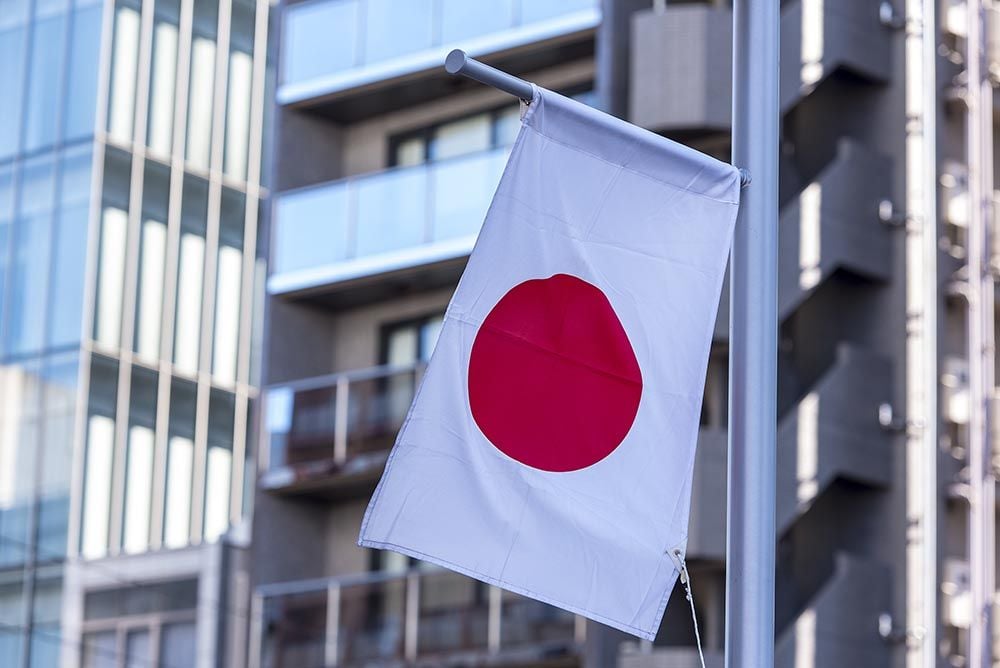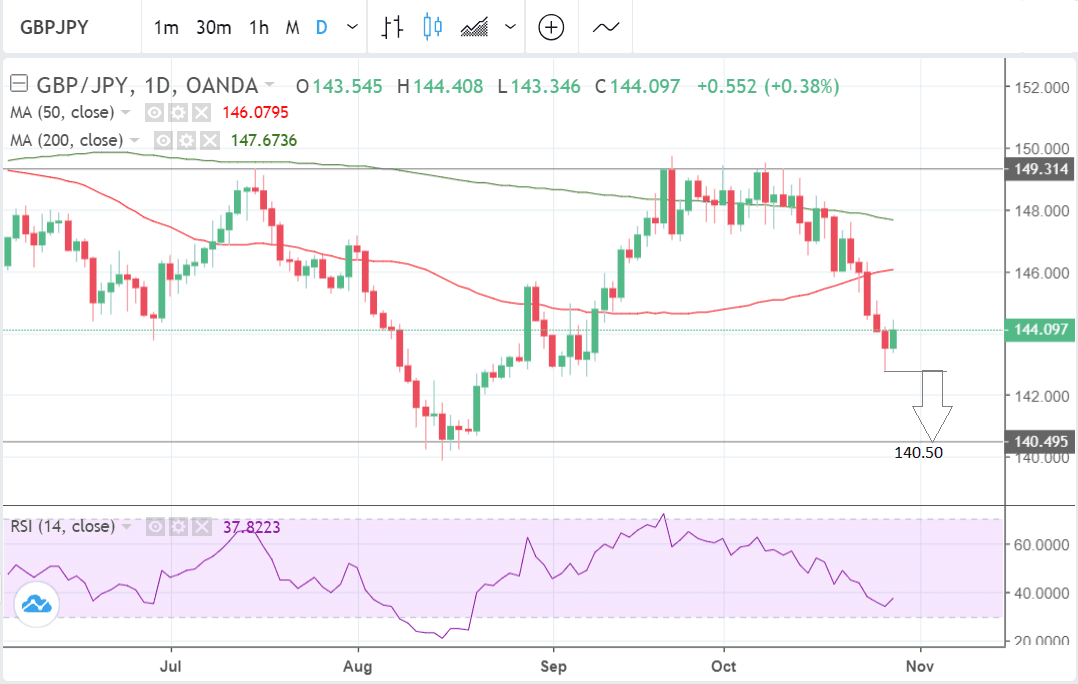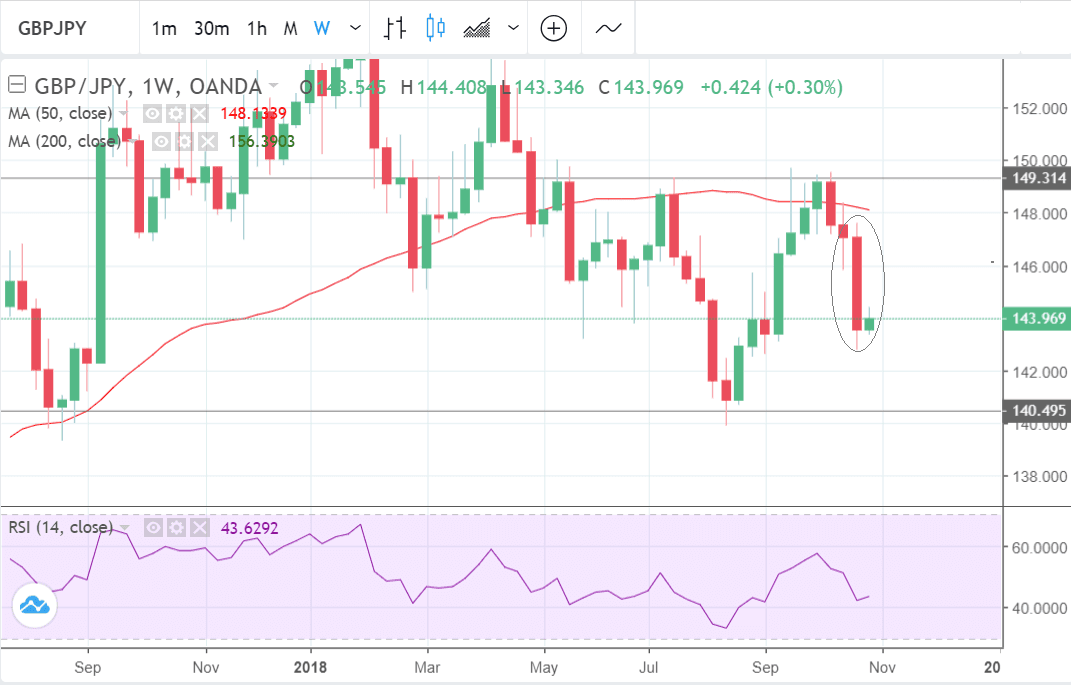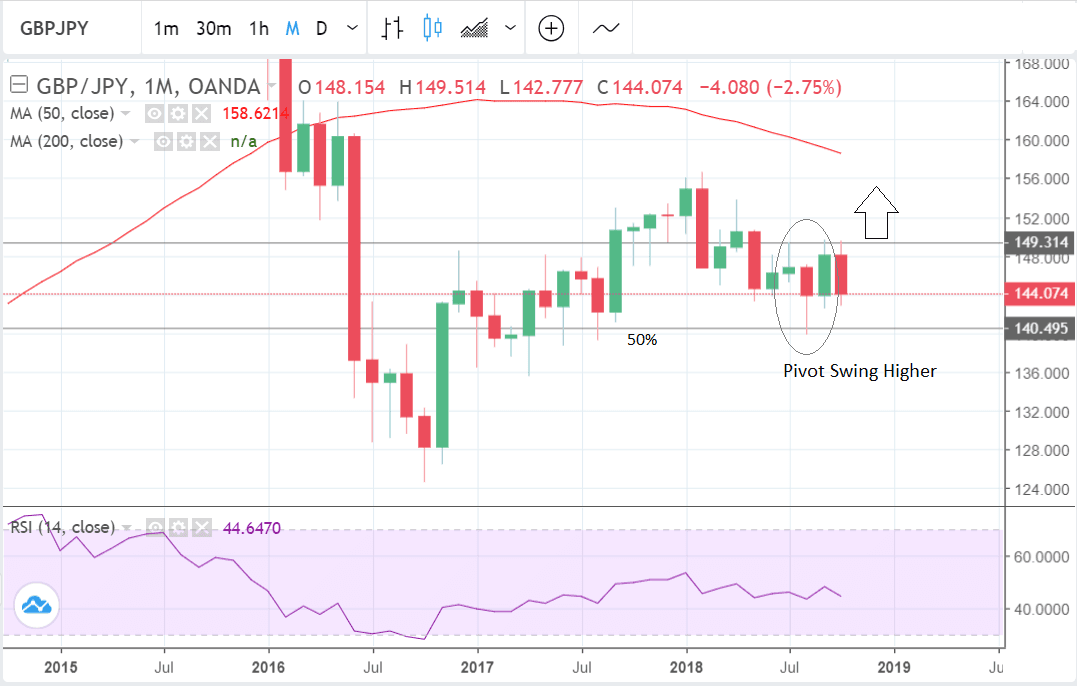Pound-Yen Week Ahead: Short-term Downtrend Likely to Continue

Image © Adobe Stock
- Short-term downtrend probably to extend
- GBP/JPY may hit low of 140
- Main events for both currencies the central bank meetings
GBP/JPY has recovered marginally on Monday as a result of easing global risk aversion which weakens the Yen more than the Pound because it is a safe-haven.
Yet the recovery is unlikely to last and overall the Pound-to-Yen rate remains in a short-term downtrend which is, on balance, forecast to extend lower this week and potentially reach support at just above the August lows.
A break below the 142.78 October 26 low would probably provide confirmation of the next move down to a target at 140.50.
The downtrend, which started at the September highs, has been quite steep which increases the possibility the exchange rate will continue to fall.
Momentum is neither particularly strong nor week and adds little to the argument. We are mildly bearish but this is not a conviction call.
The weekly chart is also mildly bearish as it shows last week formed a long, red, candle which is unlikely to be followed by a rebound higher.
The monthly chart, however, looks more bullish after showing a monthly pivot swing around the August lows. This was followed by a new 3-month high in September and the combination of these two features suggests the market could be rotating higher over the medium-term.
Following this swing, it looks likely that the August lows will not be breached. Still, given the bearish short-term charts, we would want to see a clear break above the September 149.72 highs for confirmation of more upside. Such a move would probably reach an initial target at the 156.61 level of the February highs.
The Yen: What to Watch in the Week Ahead
The key event for the Yen in the week ahead is the meeting of the Bank of Japan (BOJ) on Wednesday.
Central banks set base interest rates and these have a strong impact on the exchange rate. Higher interest rates tend to appreciate currencies and vice-versa for lower rates. This is because foreign capital tends to be drawn to where it can earn the most interest.
Japan has a negative interest rate of -0.1% which is a headwind for the Yen. The BOJ also still uses quantitative easing (QE) to try to increase inflation and this has a further depressive effect on the currency.
No-change in policy is expected from the BOJ at their next meeting, which is on Wednesday, October 31 at 4.00 GMT, but analysts will be carefully scrutinizing the BOJ's accompanying statement for hints of its intentions - or forward guidance as it is called. They will also be watching central bank governor Haruhiko Kuroda's commentary for hints of change.
If the BOJ suggests it might be thinking about winding down QE and raising interest rates it will be positive for the Yen. This appears to be more likely than not, according to some analysts.
"Kuroda has been sounding more positive about inflation, with core (ex-fresh food) inflation now at 1.0%. The elusive 2% level may still be the official target, but there is a sense that a more pragmatic 'good enough’ rate of about 1% could pave the way for the BoJ to start tweaking its policy stance. We think that we may see more stealth tightening steps to come this week - and this could be mildly supportive for the yen," says Viraj Patel, FX Strategist at ING Bank.
The Pound, meanwhile, remains under pressure from Brexit uncertainty. This is likely to continue until a deal is done, which will probably not be the case in the week ahead.
The main event for Sterling is the Bank of England (BOE) rate meeting and inflation report on Thursday.
The BOE is constrained in its policy options by Brexit uncertainty as well, however. Until a Brexit deal materialises in it is unlikely to make any major changes to policy.
Nevertheless, a marked rise in inflation expectations if revealed in Thursday's quarterly report could boost the Pound as it would sow the seeds of future rate hikes.
The current view is that the next increase will not be until May 2019, and the BOE will raise rates on average twice a year for the foreseeable future.
Advertisement
Bank-beating exchange rates: Get up to 5% more foreign exchange by using a specialist provider to get closer to the real market rate and avoid the gaping spreads charged by your bank when providing currency. Learn more here



